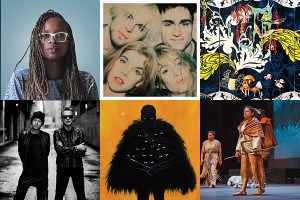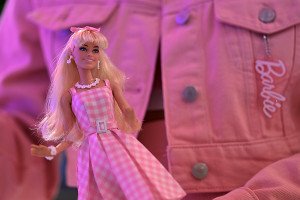Boston Street Artist to Open First Children’s Art Museum in Nepal

Schoolchildren walk by a graffiti mural by Sneha Shrestha in Kathmandu, Nepal. (Photo by Salim Ali)
After spending nearly three years guiding inner-city youth through paid painting projects on behalf of Boston-based nonprofit organization Artists for Humanity, Sneha Shrestha felt inspired. Empowered to truly call herself an artist for the first time in her life, Shrestha decided to return to her hometown of Kathmandu, Nepal, after seven years abroad. There, the street artist has been laying the groundwork for what will become the Nepal Children’s Art Museum (NCAM)—the first institution of its kind in the country.
“The grand vision for Nepal Children’s Art Museum is to establish itself as an institution and resource for art and education in Nepal,” said Shrestha in an e-mail interview.
Along with three other team members working on the project, she started an Indiegogo campaign that offered perks such as handwritten thank-you cards and custom prints to donors. The campaign ended a few weeks ago and raised $5,795 of its $9,200 goal.
The project is also partially funded by a grant Shrestha received from the Advanced Leaders Fellowship, which she heard about through a World Learning program that had previously given her the opportunity to study abroad in Bali and Geneva. This $10,000 grant requires a time frame of six months, but Shrestha is making hers sustain longer, changing her original plan of renting a space for six months into building a permanent one.
Tentatively set to open in January 2014, the art museum will house two rooms inside a 1,200-square-foot rooftop space located on top of a commercial building in the heart of Kathmandu, which the landlord generously agreed to waive two years’ rent for. The Exhibition Room will display art by Nepali children (produced in regularly scheduled museum workshops), local artists, and international collaborators, as well as NCAM publications and merchandise. The Education Room will serve as the hub of activity, with a mini library, a media corner for free screenings of educational documentaries every Saturday morning, and a workshop fully stocked with art supplies.
Shrestha recalls growing up in Nepal and asking her parents for paint or crayons, which they would surprise her with on her birthday:
“I had to wait for this special occasion to get these art materials. Mind you, my parents are much more open-minded than the average Nepali family, but even they didn’t see art as a necessity,” she said. “Although I loved painting ever since I can remember, I can’t remember a time I was encouraged to do so. Maybe when I was in kindergarten—and even that’s a privilege!”
Now, the 26-year-old seeks to encourage creativity among Nepali youth, largely motivated by her work in Boston as a mentoring artist and education coordinator.
“I was reminded every day how important art was to [Boston] youth and how it’s changed their lives. I couldn’t help but think that kids in Nepal need that, too,” she said. “My motivation behind this project is to try to have future generations live in a country where educated people come up with creative solutions to make their lives better.”
While in Boston, Shrestha also channeled her own creativity, departing from the abstract art she had previously preferred and developing a distinctive style that fuses influences from the city’s graffiti scene with her native Nepali script.
“There was no going back after that,” she said. “I was painting every weekend, painting canvas for shows and selling artwork. Being an artist began there for me.”
While continuing to paint in her unique style, Shrestha also conducts one-day workshops in partner schools, growing appreciation among children for the Nepali alphabet as an art form and not just mere text.
“[The workshops] show children that they can have fun writing and reading, and develop visuospatial skills,” she said.
The paintings of Nepali letters created by children in the workshop will eventually be compiled into an alphabet book, which NCAM will publish and advocate the use of in primary school curriculums in rural schools around Nepal, where 40 percent of the population is illiterate, according to UNICEF.
In addition to the workshops, Shrestha and her team are conducting various activities under NCAM’s Community Outreach Program before the physical space opens in January, including a winter art camp and a “Wall of Hope” mural for the Half the Sky Film and Art Festival organized by Human Rights Film Focus Nepal in November.
Once the museum does open, Shrestha plans to do more than just display work and hold workshops inside, hoping that international artists will accept invitations to participate in joined residencies with Nepali artists.
“The collaborations will help put Nepal on the map in the international art arena,” she said.
But Shrestha’s biggest goal is still to use art as a vehicle for helping youth. She hopes that NCAM becomes a well-established institution with the resources to award scholarships to aspiring college students seeking to study visual art. In addition, she plans to establish a youth entrepreneurship program through which Kathmandu teens would be employed to provide creative services for local clients—replicating the model in place at Artists for Humanity in Boston.
For more information, visit nepalcam.org or Facebook, follow @NepalCAM on Twitter, or email nepalcam@gmail.com.


